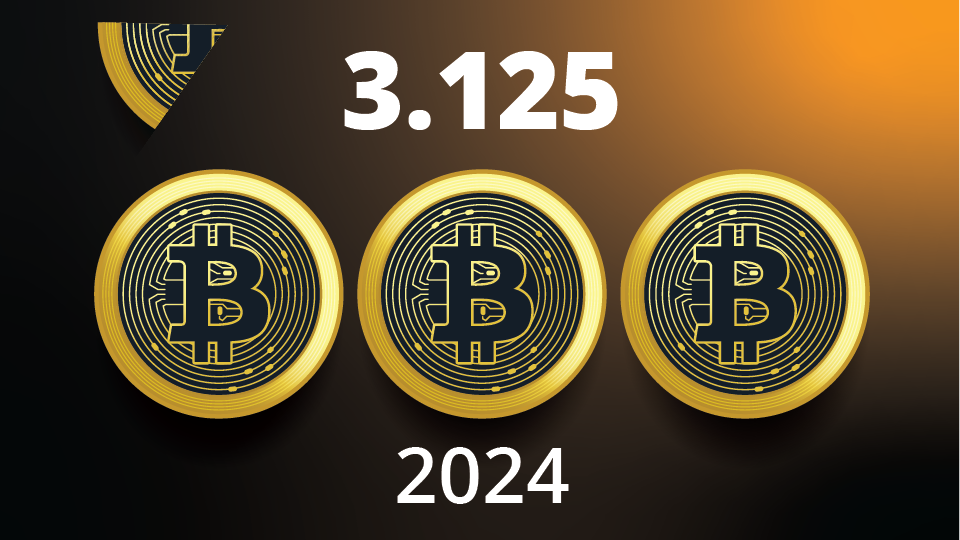Is Now the Time to Start a Bitcoin Mining Business?
January 25, 2023
Read Time 10+ MIN
Please note that VanEck has exposure to Bitcoin.

Images Generated Using AI Program DALL-E.
Simulations of a Bitcoin mining business suggest that starting a mining business is a better option than simply buying Bitcoin at current prices.
In 2022, Bitcoin miners faced the triple entente of electricity price hikes, substantial hash rate growth and Bitcoin price declines. As a consequence, mining Bitcoin is currently unprofitable for many firms, resulting in a rolling tide of bankruptcies. Industry stalwarts such as Core Scientific and Compute North have declared bankruptcy, while others such as Bitfarms, Argo and Iris Energy have warned of default. Luxor’s HI Crypto Mining Stock Index, based upon publicly traded Bitcoin miner stocks, is down 72% year-on-year. Even more dramatically, the price of mining computers themselves has declined more than 86% from the same period last year. This compares to a 58% decline for BTC. Were Baron Rothschild alive today, he might be on CNBC beaming about the crimson color of opportunity presented by the pain of Bitcoin miners. Given the immense fear, uncertainty and doubt across the industry, we assessed whether it was time to don a hard hat and enter the Bitcoin mining business.
Rolling Week on Week Yearly Returns, BTC vs Mining Rigs
Source: Luxor Technologies, VanEck Research, January 2023. Past performance is no guarantee of future results. The joule is the unit of energy in the International System of Units. 1 joule is equal to the energy that is required to raise the temperature of 0.239 g of water from 0 °C to 1 °C.
To analyze the opportunities presented, we compare the projected returns of simply buying BTC on the market versus investing in BTC mining computers to run a mining business. It is important to recall that miner businesses operate similar to farmers in the sense that both derive revenue by harvesting a commodity to sell at market. Of course, miners markedly differ as they run computers to solve a complex cryptography problem to receive a portion of Bitcoin’s inflationary block rewards. In the Bitcoin mining business, the more computing power one has relative to the network’s computing power, called “hash rate,” the greater share of Bitcoin block rewards they receive.
We built a conceptual business model for a mining operation hosted in a third-party facility based upon quoted all-in hosting rates and the current market prices of Bitcoin mining rigs. In our business plan, we buy the rigs using brokers and ship them to a company who will run, maintain and optimize the machines on our behalf. In turn, this hosting party passes through the costs of personnel, electricity purchase agreements, and infrastructure in its hosting fee. For our purposes, we are assuming an all-in hosting cost of $0.075 per kw/h of electricity usage. The maximum life of our business is three years.
The endeavor’s expenses consist of mining rig acquisition costs, variable costs of hosting the rigs, and asset disposal costs from exiting from the business. The business revenues are based upon projected sales proceeds of the mined Bitcoin and the estimated gain on sale from liquidating the bitcoin miners upon close of the operation. To maximize tax benefits, we double line depreciate over a useful machine life of five years. The greatest factors affecting profitability of our theoretical mining operation are:
- Purchase price of the mining rigs
- Efficiency of the mining rigs
- Hosting cost (electricity cost)
- Price of Bitcoin
- Growth of the hash rate
- Mining rig resale price
The base of our model begins by applying live broker quotes for seven different miner rigs of various efficiencies as well as hosting rates from five separate miner data centers. To estimate the price of Bitcoin, price of mining rigs and growth of hashing rate, we use historical data to project future variation. We feed this variation into Monte Carlo simulations to create thousands of hypothetical outcomes to assess profitability of our business across many scenarios. In each situation, we compare the return profile of the mining entity to the returns of Bitcoin. To simplify our model, our business has three potential exit timings as well as two strategies for selling the mined Bitcoins:
- Exit after 1 Year
- Sell the mined coins at the end of the year alongside mining rigs.
- Exit after 2 Years
- Hold the mined coins until end of year 2 and sell them alongside the mining rigs.
- Sell the mined coins continuously throughout operation and the mining rigs at the end of the second year.
- Exit after 3 Years
- Hold the mined coins until end of year 3 and sell them alongside the mining rigs.
- Sell the mined coins continuously throughout operation and the mining rigs at the end of the third year.
These different strategies are compared in our model against the benchmark of just holding Bitcoin. Basically, our business is run through thousands of hypothetical scenarios where we adjust all the previously mentioned key factors affecting profitability against the various types of mining strategies. Because we do not know what the outcomes will be, these permutations provide an understanding of the profitability of our business over many, many outcomes.
The below table reflects the results of different mining strategies when compared against mining rig beta and hash rate growth. The variable inputs in this table is the yearly average price of Bitcoin in 2023, 2024 and 2025. The prices used to generate the below table are $18k for 2023, $33k for 2024 and $45k for 2025. Eight bitcoin mining strategies were compared - which included holding mined bitcoin for a period of time before selling (1-3 years), selling mined bitcoin as soon as they are mined, or buying and holding bitcoin (1-3 years).
Source: VanEck Research, January 2023. Please see important disclosures below regarding hypothetical performance. Hypothetical performance is designed with benefit of hindsight. These simulated results have no financial risk, and they do not represent actual trading, and as such, may not account for various market factors that would have impacted the results. Beta of rig price is a measure of the price volatility of a mining rig compared to Bitcoin’s price. Hash rate is a measure of the computational power on a blockchain network. The chart represents different hypothetical scenarios comparing mining rig beta to hash rate growth.
The orange dotted box denotes the historical ranges of rig beta and hash rate growth. The shading of the box denotes in each scenario whether mining or holding Bitcoin produces higher returns, with green indicating mining and red holding. Likewise, the text denotes the best strategy to pursue within the broader strategies. The takeaway is that based upon past values of hash rate growth and rig beta, and Bitcoin price as noted, a better risk versus reward is to buy machines and mine BTC. Additionally, the best mining strategy, if the past is any predictor, would be to hold the coins until the end of the business in three years.
Other price outcomes, both the absolute values and the trajectories of those values, will change our sensitivity table outcome. For example, if the Bitcoin price exploded 200% the first year and then cratered to decline 50% in each of the next two years, the best mining strategy would obviously be to sell all the coins as well as the rig after the first year of operation. Clearly, we do not have Congresswoman Pelosi’s crystal ball to see future price outcomes, so we employ simulations to inform us which strategy is most profitable, the most number of times, and on average how profitable it is.
The below table reflects the results of a single, hypothetical scenario out of 5,000 using a Monte Carlo simulation. The variable inputs for the simulation included the average price of Bitcoin in future years, the hash rate growth, and the beta of the mining rigs to Bitcoin. From there, the simulation calculates the return of eight different strategies for the miners, which included holding mined bitcoin for a period of time before selling (1-3 years), selling mined bitcoin as soon as they are mined, or buying and holding bitcoin (1-3 years).
| Monte Carlo Outcome Through 5,000 Scenarios Using Bitcoin Price Historical Distributions of Bitcoin Returns | ||||||||
| 1 Yr Hold Coins/Exit |
2 Yr Hold Coins/Exit |
3 Yr Hold Coins/Exit |
Sell Coins Continuously, Exit Yr 2 |
Sell Coins Continuously, Exit Yr 3 |
Buy/Hold BTC Yr 1 |
Buy/Hold BTC Yr 2 |
Buy/Hold BTC Yr 3 |
|
| Mean Return | 70.14% | 233.32% | 544.53% | 172.19% | 316.36% | 71.13% | 195.58% | 421.87% |
| Mean Return When Profitable | 157.93% | 457.78% | 1,006.71% | 336.93% | 577.39% | 163.72% | 371.22% | 729.16% |
| Mean Loss When Unprofitable | -42.05% | -66.67% | -87.98% | -58.51% | -74.20% | -43.79% | -52.22% | -56.74% |
| Percentage of Time Profitable | 56.10% | 57.20% | 57.78% | 58.34% | 59.94% | 55.38% | 58.52% | 60.90% |
| Instances Best Strategy | 921 | 698 | 1,781 | 50 | 14 | 557 | 425 | 554 |
| Percent of Time Best Strategy | 18.42% | 13.96% | 35.62% | 1.00% | 0.28% | 11.14% | 8.50% | 11.08% |
Source: VanEck Research, January 2023. Please see important disclosures below regarding hypothetical performance. Hypothetical performance is designed with benefit of hindsight. These simulated results have no financial risk, and they do not represent actual trading, and as such, may not account for various market factors that would have impacted the results. The table represents the result of a single Monte Carlo simulation (out of 5,000) showing the result of different strategies that bitcoin miners can employ (hold for pre-determined time/sell continuously/hold).
The key takeaway from our analysis is that from an expected value standpoint, it is more profitable to run a mining business than it is to buy and hold Bitcoin if our main inputs behave as they have historically. Additionally, of all the mining strategies, the highest expected return (mean return) comes from the strategy where a miner holds its coins to sell them when the business is rolled up at the end of three years. Likewise, it is also clear that the downside risk of running a mining business is greater than buying and holding Bitcoin as an investor can easily loser more of his initial investment supporting an unprofitable mining entity. We attribute these findings to two factors. First, the Bitcoin mining rigs trade at prices that are favorable relative to their potential value for appreciation in bullish Bitcoin scenarios. Second, the historical price trajectory of Bitcoin is skewed positive with high kurtosis (fat tails) and it appears this potential is not reflected in the current price of mining rigs. Therefore, the risk-seeking, adventurous investor may want to consider the mining business. Give us a call if you have a site with cheap power!
DISCLAIMER: The above is not intended as financial advice nor as a recommendation to buy or sell any securities, Bitcoin mining equipment, or to take any other action. These are solely the results of a simulation and are for illustrative purposes only. This simulation projects distributions of BTC based upon the distribution of historical returns as well as the distribution of Bitcoin miner beta and hash rate growth. These historical data points were used as the basis for functions that would output projections based upon the distribution of these historical data points. This is not intended as a projection of what the returns of BTC look will like. Neither we, nor anyone else including Satoshi Nakamoto himself, know what the price of Bitcoin, the hashing rate, the price of miners or the beta of miner to Bitcoin will be in the future. This is simply a mock-up based upon historical inputs. Please conduct your own research.
To receive more Digital Assets insights, sign up in our subscription center.
Related Topics
Related Insights
DISCLOSURES
Definitions
Bitcoin (BTC) is a decentralized digital currency, without a central bank or single administrator, that can be sent from user to user on the peer-to-peer bitcoin network without the need for intermediaries. Beta of rig price is a measure of the price volatility of a mining rig compared to Bitcoin’s price.
Hash rate is a measure of the computational power on a blockchain network.
The joule is the unit of energy in the International System of Units. It is equal to the amount of work done when a force of 1 newton displaces a mass through a distance of 1 metre in the direction of the force applied.
Please note that VanEck may offer investments products that invest in the asset class(es) or industries included in this communication.
This is not an offer to buy or sell, or a solicitation of any offer to buy or sell any of the cryptocurrencies mentioned herein. The information presented does not involve the rendering of personalized investment, financial, legal, or tax advice. Certain statements contained herein may constitute projections, forecasts and other forward looking statements, which do not reflect actual results. Information provided by third-party sources are believed to be reliable and have not been independently verified for accuracy or completeness and cannot be guaranteed. Any opinions, projections, forecasts, and forward-looking statements presented herein are valid as of the date of this communication and are subject to change without notice. The information herein represents the opinion of the author(s), but not necessarily those of VanEck or its employees.
Past performance is not an indication, or guarantee, of future results. Hypothetical or model performance results have certain inherent limitations. Unlike an actual performance record, simulated results do not represent actual trading, and accordingly, may have undercompensated or overcompensated for the impact, if any, of certain market factors such as market disruptions and lack of liquidity. In addition, hypothetical trading does not involve financial risk and no hypothetical trading record can completely account for the impact of financial risk in actual trading (for example, the ability to adhere to a particular trading program in spite of trading losses). Hypothetical or model performance is designed with benefit of hindsight.
Cryptocurrency is a digital representation of value that functions as a medium of exchange, a unit of account, or a store of value, but it does not have legal tender status. Cryptocurrencies are sometimes exchanged for U.S. dollars or other currencies around the world, but they are not generally backed or supported by any government or central bank. Their value is completely derived by market forces of supply and demand, and they are more volatile than traditional currencies. The value of cryptocurrency may be derived from the continued willingness of market participants to exchange fiat currency for cryptocurrency, which may result in the potential for permanent and total loss of value of a particular cryptocurrency should the market for that cryptocurrency disappear. Cryptocurrencies are not covered by either FDIC or SIPC insurance. Legislative and regulatory changes or actions at the state, federal, or international level may adversely affect the use, transfer, exchange, and value of cryptocurrency.
Investing in cryptocurrencies comes with a number of risks, including volatile market price swings or flash crashes, market manipulation, and cybersecurity risks. In addition, cryptocurrency markets and exchanges are not regulated with the same controls or customer protections available in equity, option, futures, or foreign exchange investing. There is no assurance that a person who accepts a cryptocurrency as payment today will continue to do so in the future.
Investors should conduct extensive research into the legitimacy of each individual cryptocurrency, including its platform, before investing. The features, functions, characteristics, operation, use and other properties of the specific cryptocurrency may be complex, technical, or difficult to understand or evaluate. The cryptocurrency may be vulnerable to attacks on the security, integrity or operation, including attacks using computing power sufficient to overwhelm the normal operation of the cryptocurrency’s blockchain or other underlying technology. Some cryptocurrency transactions will be deemed to be made when recorded on a public ledger, which is not necessarily the date or time that a transaction may have been initiated.
Investors must have the financial ability, sophistication and willingness to bear the risks of an investment and a potential total loss of their entire investment in cryptocurrency.
- An investment in cryptocurrency is not suitable or desirable for all investors.
- Cryptocurrency has limited operating history or performance.
- Fees and expenses associated with a cryptocurrency investment may be substantial.
There may be risks posed by the lack of regulation for cryptocurrencies and any future regulatory developments could affect the viability and expansion of the use of cryptocurrencies. Investors should conduct extensive research before investing in cryptocurrencies.
Information provided by Van Eck is not intended to be, nor should it be construed as financial, tax or legal advice. It is not a recommendation to buy or sell an interest in cryptocurrencies.
All investing is subject to risk, including the possible loss of the money you invest. As with any investment strategy, there is no guarantee that investment objectives will be met and investors may lose money. Diversification does not ensure a profit or protect against a loss in a declining market. Past performance is no guarantee of future performance.
© Van Eck Securities Corporation, Distributor, a wholly owned subsidiary of Van Eck Associates Corporation.
Related Funds
DISCLOSURES
Definitions
Bitcoin (BTC) is a decentralized digital currency, without a central bank or single administrator, that can be sent from user to user on the peer-to-peer bitcoin network without the need for intermediaries. Beta of rig price is a measure of the price volatility of a mining rig compared to Bitcoin’s price.
Hash rate is a measure of the computational power on a blockchain network.
The joule is the unit of energy in the International System of Units. It is equal to the amount of work done when a force of 1 newton displaces a mass through a distance of 1 metre in the direction of the force applied.
Please note that VanEck may offer investments products that invest in the asset class(es) or industries included in this communication.
This is not an offer to buy or sell, or a solicitation of any offer to buy or sell any of the cryptocurrencies mentioned herein. The information presented does not involve the rendering of personalized investment, financial, legal, or tax advice. Certain statements contained herein may constitute projections, forecasts and other forward looking statements, which do not reflect actual results. Information provided by third-party sources are believed to be reliable and have not been independently verified for accuracy or completeness and cannot be guaranteed. Any opinions, projections, forecasts, and forward-looking statements presented herein are valid as of the date of this communication and are subject to change without notice. The information herein represents the opinion of the author(s), but not necessarily those of VanEck or its employees.
Past performance is not an indication, or guarantee, of future results. Hypothetical or model performance results have certain inherent limitations. Unlike an actual performance record, simulated results do not represent actual trading, and accordingly, may have undercompensated or overcompensated for the impact, if any, of certain market factors such as market disruptions and lack of liquidity. In addition, hypothetical trading does not involve financial risk and no hypothetical trading record can completely account for the impact of financial risk in actual trading (for example, the ability to adhere to a particular trading program in spite of trading losses). Hypothetical or model performance is designed with benefit of hindsight.
Cryptocurrency is a digital representation of value that functions as a medium of exchange, a unit of account, or a store of value, but it does not have legal tender status. Cryptocurrencies are sometimes exchanged for U.S. dollars or other currencies around the world, but they are not generally backed or supported by any government or central bank. Their value is completely derived by market forces of supply and demand, and they are more volatile than traditional currencies. The value of cryptocurrency may be derived from the continued willingness of market participants to exchange fiat currency for cryptocurrency, which may result in the potential for permanent and total loss of value of a particular cryptocurrency should the market for that cryptocurrency disappear. Cryptocurrencies are not covered by either FDIC or SIPC insurance. Legislative and regulatory changes or actions at the state, federal, or international level may adversely affect the use, transfer, exchange, and value of cryptocurrency.
Investing in cryptocurrencies comes with a number of risks, including volatile market price swings or flash crashes, market manipulation, and cybersecurity risks. In addition, cryptocurrency markets and exchanges are not regulated with the same controls or customer protections available in equity, option, futures, or foreign exchange investing. There is no assurance that a person who accepts a cryptocurrency as payment today will continue to do so in the future.
Investors should conduct extensive research into the legitimacy of each individual cryptocurrency, including its platform, before investing. The features, functions, characteristics, operation, use and other properties of the specific cryptocurrency may be complex, technical, or difficult to understand or evaluate. The cryptocurrency may be vulnerable to attacks on the security, integrity or operation, including attacks using computing power sufficient to overwhelm the normal operation of the cryptocurrency’s blockchain or other underlying technology. Some cryptocurrency transactions will be deemed to be made when recorded on a public ledger, which is not necessarily the date or time that a transaction may have been initiated.
Investors must have the financial ability, sophistication and willingness to bear the risks of an investment and a potential total loss of their entire investment in cryptocurrency.
- An investment in cryptocurrency is not suitable or desirable for all investors.
- Cryptocurrency has limited operating history or performance.
- Fees and expenses associated with a cryptocurrency investment may be substantial.
There may be risks posed by the lack of regulation for cryptocurrencies and any future regulatory developments could affect the viability and expansion of the use of cryptocurrencies. Investors should conduct extensive research before investing in cryptocurrencies.
Information provided by Van Eck is not intended to be, nor should it be construed as financial, tax or legal advice. It is not a recommendation to buy or sell an interest in cryptocurrencies.
All investing is subject to risk, including the possible loss of the money you invest. As with any investment strategy, there is no guarantee that investment objectives will be met and investors may lose money. Diversification does not ensure a profit or protect against a loss in a declining market. Past performance is no guarantee of future performance.
© Van Eck Securities Corporation, Distributor, a wholly owned subsidiary of Van Eck Associates Corporation.




